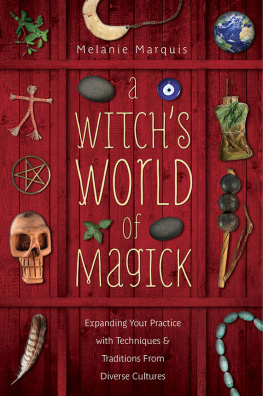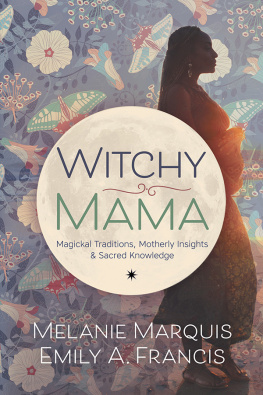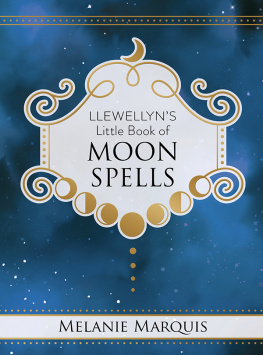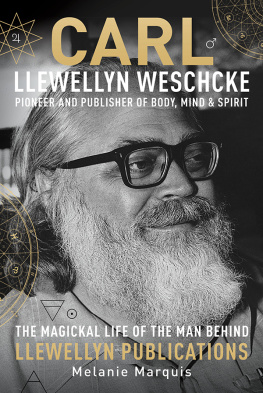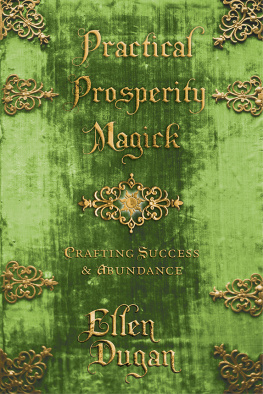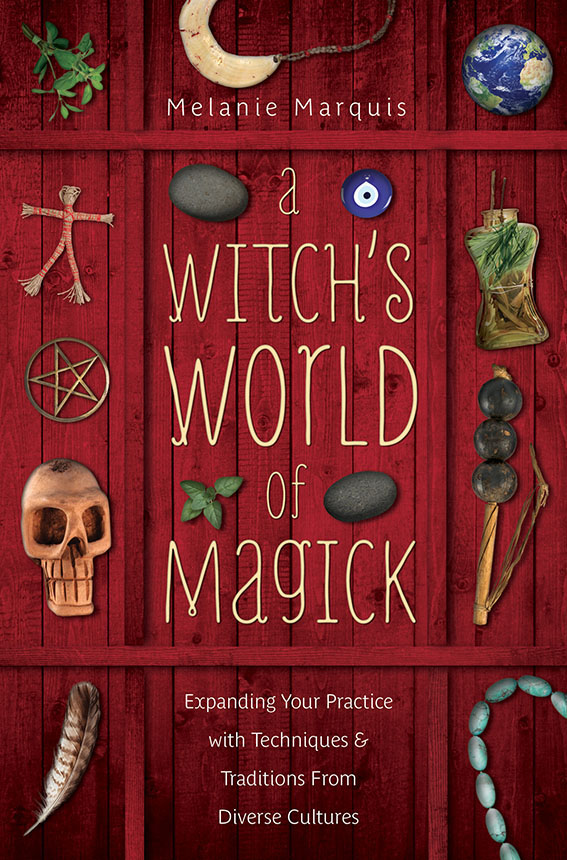Melanie Marquis is a lifelong practitioner of magick, founder of the United Witches global coven, and organizer of Denver Pagans. Shes the author of The Witchs Bag of Tricks and has written for national and international Pagan publications, including Circle and Pentacle Magazine . She also writes for several of Llewellyns almanacs and datebooks.She resides in Colorado. Visit her at http://www.melaniemarquis.com.
Llewellyn Publications
Woodbury, Minnesota
Copyright Information
A Witchs World of Magick: Expanding Your Practice with Techniques & Traditions From Diverse Cultures 2014 by Melanie Marquis.
All rights reserved. No part of this book may be used or reproduced in any matter whatsoever, including Internet usage, without written permission from Llewellyn Publications, except in the form of brief quotations embodied in critical articles and reviews.
As the purchaser of this e-book, you are granted the non-exclusive, non-transferable right to access and read the text of this e-book on screen. The text may not be otherwise reproduced, transmitted, downloaded, or recorded on any other storage device in any form or by any means.
Any unauthorized usage of the text without express written permission of the publisher is a violation of the authors copyright and is illegal and punishable by law.
First e-book edition 2013
E-book ISBN: 9780738739854
Book design by Bob Gaul
Cover art:
1554377:iStockphoto.com/LeitnerR, 3374582:iStockphoto.com/janrysavy,
305688:iStockphoto.com/dsteller, 19766604:iStockphoto.com/ollo,
13427522:iStockphoto.com/de-kay, 18444070:iStockphoto.com/Corben_D,
16428972:iStockphoto.com/mammamaart, 16428981:iStockphoto.com/mammamaart,
219213:iStockphoto.com/Morrhigan, 20475123:iStockphoto.com/gavran333,
2730309:iStockphoto.com/jeffreeee, 8556532:iStockphoto.com/CreativeFire,
5026862:iStockphoto.com/Susan Trigg, 65251777:sniegirova mariia/Shutterstock,
3209759:Vladimir Melnik/Shutterstock
Cover design by Kevin R. Brown
Editing by Laura Graves
Llewellyn Publications is an imprint of Llewellyn Worldwide Ltd.
Llewellyn Publications does not participate in, endorse, or have any authority or responsibility concerning private business arrangements between our authors and the public.
Any Internet references contained in this work are current at publication time, but the publisher cannot guarantee that a specific reference will continue or be maintained. Please refer to the publishers website for links to current author websites.
Llewellyn Publications
Llewellyn Worldwide Ltd.
2143 Wooddale Drive
Woodbury, MN 55125
www.llewellyn.com
Manufactured in the United States of America
This book is lovingly dedicated to my magickal
mama Eva Janice Marquis, and to Franchesica Middleton
and all the other wonderful witches who choose
to make their own way in the world.
Acknowledgments
Special thanks to my family and friends for the love and laughter that makes my world a magickal place. Mia, Aidan, Andrew Harris, Jon Marquis, Melissa Chapman, Elizabeth Bridges, Jenny Edwards, Eugene, Tavarius, Calvin Carter, Ahoono, and Sally, you all are the best and I thank you!
Contents
: No-Tools Body Magick
: Potion Making and Mixing Magick
: The Art of Containing Energies: Magick to Have and to Hold
: Ties that Bind
: Nail It Down: Insert Magick Here
: Naming Names: Identification in the Magickal Arts
: Decoy Magick
: Cursebreaking and Countercharms: Magick to Undo
: Masks, Mimicry, and Magick
: Group Magick
Introduction
With all the stigma and misconceptions still associated with modern witchcraft practice, its easy to forget sometimes just how ancient and widespread the belief in magick truly is. Magick is arguably both older and more broadly practiced than many of the earths most prominent organized religions. While Christianity dates from around 30 CE and boasts 2 billion followersan impressive tally, to be suremagickal belief has its origins tens of thousands of years earlier and its traces can be found in nearly every culture on earth.
We can add to this the abundance of people around the planet who engage in magickal practices categorized and legitimized as folk religion. Practitioners of indigenous Chinese religion, for instance, who number an approximate 394 million, frequently practice divination, astrology, and longevity alchemy. While these activities are practiced in a primarily religious context, they nonetheless have a quality that is easy to recognize as distinctly magickal. Consider also the 5 million followers of New Age philosophy, the 1 to 3 million Wiccans, and the masses of hard-to-count Neo- Pagans, chaos magicians, ceremonial magicians, hedge witches, kitchen witches, and undefinable others whose practices involve at least some form of magickal ritual, and youve got a good case for the worldwide prominence and popularity of magick.
Its no wonder magickal practice is so widespread. It has a long history, and besides, magick does often work, after all. Archeologists have uncovered ample evidence of ritualistic burial practices, venus fetishes, and other relics that support a very early belief in magick and mysticim. The most conservative estimates date the time of humanitys first foray into ritual to at least 35,00040,000 years ago, but more recent research points to an even earlier birth of magick.
In 2006, University of Oslo archeologists Sheila Coulson and Neil Walker released their findings about a ritual site located in an area of the Tsodilo Hills in Botswana thats estimated to be around 70,000 years old. Known as Rhino Cave, the cavern contains a large (20' by 6.5'), very snakelike rock, Python Rock, which bears hundreds of human-made scorelines, grooves that resemble a pattern of scales. Beneath the snake, the archeologists unearthed hundreds of spearheads that seemed to have had a special, likely magickal, purpose. Theyre made from finer stones than the everyday spearheads of the time, more brightly colored and crafted from stones brought from up to 100 kilometers away. The cave shows evidence that the spearheads were crafted on site, perhaps begun in another location, but finished right there at the side of the great snake.
Another interesting point about the spearheads reveals the subtlety and variance of magickal methods far into the distant past. Of the hundreds of spearheads that have been found at Python Rock in all their array of colors, only spearheads of a certain type show signs of having been placed in contact with fire. These spearheads have taken on a red color from the heating process, which was apparently a quick trip through a very hot flame. This heating action was different than the process typically used for tempering spearheads, indicating that these particular spearheads may have been burnt for a ritualistic, rather than practical, purpose. Other spearheads discovered at the site do not show any signs of burning. Fragments of quartz crystal were also found at the cave site, stuffed into cracks and crevices in the cavern walls and floor, and even stowed right beneath the giant stone snake. If the dating on the Rhino Cave site is correct, this evidence taken together makes it appear likely that humans were exhibiting an understanding of magickal principles as far back as 70,000 years ago!

